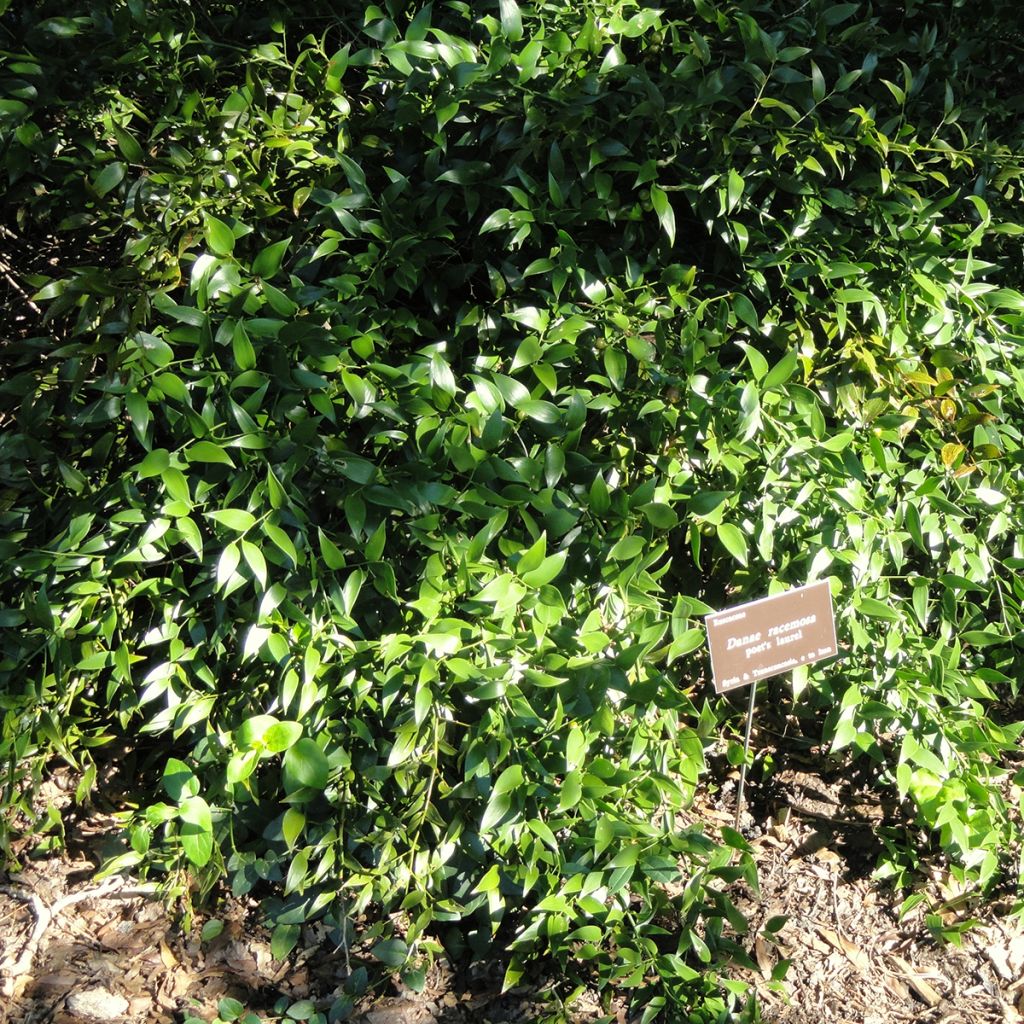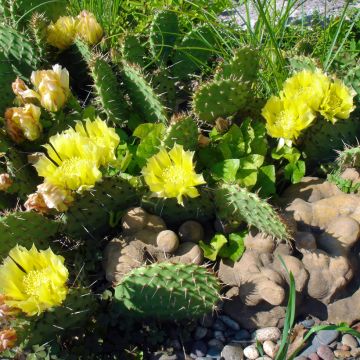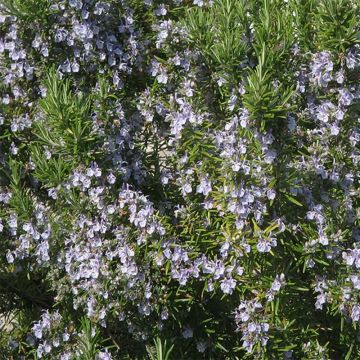

Danae racemosa - Alexandrian Laurel


Danae racemosa - Alexandrian Laurel


Danae racemosa - Alexandrian Laurel
Danae racemosa - Alexandrian Laurel
Danae racemosa
Alexandrian Laurel, Poet's Laurel
Special offer!
Receive a €20 voucher for any order over €90 (excluding delivery costs, credit notes, and plastic-free options)!
1- Add your favorite plants to your cart.
2- Once you have reached €90, confirm your order (you can even choose the delivery date!).
3- As soon as your order is shipped, you will receive an email containing your voucher code, valid for 3 months (90 days).
Your voucher is unique and can only be used once, for any order with a minimum value of €20, excluding delivery costs.
Can be combined with other current offers, non-divisible and non-refundable.
Home or relay delivery (depending on size and destination)
Schedule delivery date,
and select date in basket
This plant carries a 24 months recovery warranty
More information
We guarantee the quality of our plants for a full growing cycle, and will replace at our expense any plant that fails to recover under normal climatic and planting conditions.
Would this plant suit my garden?
Set up your Plantfit profile →
Description
The Alexandrian Laurel, in Latin Danae racemosa, sometimes called Clustered Fragon, is a perennial bush related to the Butcher's Broom (Ruscus aculeatus) and visually very similar. The plant is more ornamental with a larger growth, larger false leaves, and a more flexible habit. Its sacred bamboo-like silhouette, beautiful red berries, and lush foliage bring richness to the garden even in winter. Resistant to cold and drought and comfortable in shady areas, the Alexandrian laurel is remarkable in difficult-to-vegetate zones. Its leafy branches are appreciated in floristry.
The Danae racemosa and its mature size averages 90 cm in all directions, depending on the growing conditions. Its stump has nodose rhizomes that spread little.
The Clustered Fragon has a flexible bushy habit supported by gracefully trailing stems. Its spring shoots emerging from the ground resemble small asparagus. What appear as tough, shiny leaves are cladodes, flattened stems that perform the same chlorophyll function as leaves. They are lanceolate in shape, measuring up to 10 cm long, and remain green throughout winter, even in freezing temperatures. Flowering occurs in June-July in average climates. The tiny greenish-yellow flowers appear in clusters at the ends of the stems. The fruit is a small round berry, 0.5 cm in diameter, gradually turning from green to bright red as it ripens. This fruiting persists throughout winter if birds do not feast on it.
The Alexandrian Laurel thrives in shade or partial shade, in well-drained soil, and thrives in the undergrowth, away from the sun's scorching rays. Once well-rooted, the plant requires no special maintenance. It is a bush with a place in all gardens to bring life to a too-dark corner, under a sparsely dense mass of trees or shrubs to dress their base. Its Nandina-like appearance will blend well with lilies and bleeding hearts, and its shiny green foliage will enhance the delicate hues of Magellan fuchsias and columbines. In shaded gardens in the South, associate it with bear's breeches and periwinkles. In winter, it can be used to create floral arrangements in the house, such as with amaryllis.
Report an error about the product description
Danae racemosa - Alexandrian Laurel in pictures




Plant habit
Flowering
Foliage
Safety measures
Botanical data
Danae
racemosa
Asparagaceae
Alexandrian Laurel, Poet's Laurel
West Asia
ingestion
Cette plante est toxique si elle est ingérée volontairement ou involontairement.
Ne la plantez pas là où de jeunes enfants peuvent évoluer, et lavez-vous les mains après l'avoir manipulée.
Pensez à conserver l'étiquette de la plante, à la photographier ou à noter son nom, afin de faciliter le travail des professionnels de santé.
Davantage d'informations sur https://plantes-risque.info
Planting and care
Plant the Shrub Fragon in well-drained, slightly acidic to slightly alkaline soil, dry to moist, even poor. The plant is sensitive to excessive moisture in winter. This shrub will thrive in shade or partial shade, in the morning sun, away from the scorching rays. It requires no special maintenance except for regular watering during its first year of planting. It is not invasive. Divide the clumps after five years, especially in case of exceptional frosts. It is hardy down to -20 °C and resistant to summer drought once well-rooted.
It can also be grown in a large pot in a well-drained mixture of potting soil and garden soil. Water regularly, allowing the substrate to dry out a bit between waterings. An application of organic fertiliser or compost in spring will be appreciated.
Planting period
Intended location
Care
Planting & care advice
This item has not been reviewed yet - be the first to leave a review about it.
Similar products
Haven't found what you were looking for?
Hardiness is the lowest winter temperature a plant can endure without suffering serious damage or even dying. However, hardiness is affected by location (a sheltered area, such as a patio), protection (winter cover) and soil type (hardiness is improved by well-drained soil).

Photo Sharing Terms & Conditions
In order to encourage gardeners to interact and share their experiences, Promesse de fleurs offers various media enabling content to be uploaded onto its Site - in particular via the ‘Photo sharing’ module.
The User agrees to refrain from:
- Posting any content that is illegal, prejudicial, insulting, racist, inciteful to hatred, revisionist, contrary to public decency, that infringes on privacy or on the privacy rights of third parties, in particular the publicity rights of persons and goods, intellectual property rights, or the right to privacy.
- Submitting content on behalf of a third party;
- Impersonate the identity of a third party and/or publish any personal information about a third party;
In general, the User undertakes to refrain from any unethical behaviour.
All Content (in particular text, comments, files, images, photos, videos, creative works, etc.), which may be subject to property or intellectual property rights, image or other private rights, shall remain the property of the User, subject to the limited rights granted by the terms of the licence granted by Promesse de fleurs as stated below. Users are at liberty to publish or not to publish such Content on the Site, notably via the ‘Photo Sharing’ facility, and accept that this Content shall be made public and freely accessible, notably on the Internet.
Users further acknowledge, undertake to have ,and guarantee that they hold all necessary rights and permissions to publish such material on the Site, in particular with regard to the legislation in force pertaining to any privacy, property, intellectual property, image, or contractual rights, or rights of any other nature. By publishing such Content on the Site, Users acknowledge accepting full liability as publishers of the Content within the meaning of the law, and grant Promesse de fleurs, free of charge, an inclusive, worldwide licence for the said Content for the entire duration of its publication, including all reproduction, representation, up/downloading, displaying, performing, transmission, and storage rights.
Users also grant permission for their name to be linked to the Content and accept that this link may not always be made available.
By engaging in posting material, Users consent to their Content becoming automatically accessible on the Internet, in particular on other sites and/or blogs and/or web pages of the Promesse de fleurs site, including in particular social pages and the Promesse de fleurs catalogue.
Users may secure the removal of entrusted content free of charge by issuing a simple request via our contact form.
The flowering period indicated on our website applies to countries and regions located in USDA zone 8 (France, the United Kingdom, Ireland, the Netherlands, etc.)
It will vary according to where you live:
- In zones 9 to 10 (Italy, Spain, Greece, etc.), flowering will occur about 2 to 4 weeks earlier.
- In zones 6 to 7 (Germany, Poland, Slovenia, and lower mountainous regions), flowering will be delayed by 2 to 3 weeks.
- In zone 5 (Central Europe, Scandinavia), blooming will be delayed by 3 to 5 weeks.
In temperate climates, pruning of spring-flowering shrubs (forsythia, spireas, etc.) should be done just after flowering.
Pruning of summer-flowering shrubs (Indian Lilac, Perovskia, etc.) can be done in winter or spring.
In cold regions as well as with frost-sensitive plants, avoid pruning too early when severe frosts may still occur.
The planting period indicated on our website applies to countries and regions located in USDA zone 8 (France, United Kingdom, Ireland, Netherlands).
It will vary according to where you live:
- In Mediterranean zones (Marseille, Madrid, Milan, etc.), autumn and winter are the best planting periods.
- In continental zones (Strasbourg, Munich, Vienna, etc.), delay planting by 2 to 3 weeks in spring and bring it forward by 2 to 4 weeks in autumn.
- In mountainous regions (the Alps, Pyrenees, Carpathians, etc.), it is best to plant in late spring (May-June) or late summer (August-September).
The harvesting period indicated on our website applies to countries and regions in USDA zone 8 (France, England, Ireland, the Netherlands).
In colder areas (Scandinavia, Poland, Austria...) fruit and vegetable harvests are likely to be delayed by 3-4 weeks.
In warmer areas (Italy, Spain, Greece, etc.), harvesting will probably take place earlier, depending on weather conditions.
The sowing periods indicated on our website apply to countries and regions within USDA Zone 8 (France, UK, Ireland, Netherlands).
In colder areas (Scandinavia, Poland, Austria...), delay any outdoor sowing by 3-4 weeks, or sow under glass.
In warmer climes (Italy, Spain, Greece, etc.), bring outdoor sowing forward by a few weeks.
















































